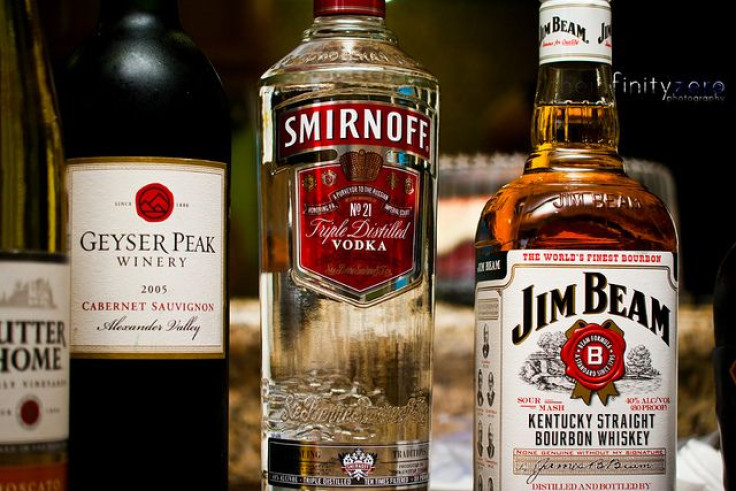The Alcohol Brands Found In Magazine And TV Ads Influence Underage Drinkers' Beverage Of Choice

A person's first drink of alcohol has been a part of Hollywood coming-of-age films for the longest time. Perhaps you remember the first time you had an adult beverage. If you don't remember what that beverage was, a new report might help you remember, as it found that brand-specific alcohol advertising is influential in the type of alcohol underage drinkers consume.
Researchers from the Center on Alcohol Marketing and Youth at the Johns Hopkins Bloomberg School of Public Health and the Boston University School of Public Health found that kids aged 13 to 20 were five times more likely to drink brands they saw advertised on national TV and 36 percent more likely to drink brands they saw in national magazines, when compared to brands that didn’t advertise in either mediums. "Marketing exposure is increasingly recognized as an important factor in youth drinking, yet few studies have examined the relationship between overall advertising exposure and alcohol consumption at the brand level," said study co-author David Jernigan, CAMY director and an associate professor in the Bloomberg School's Department of Health, Behavior, and Society, in a press release. "These findings indicate that youth are in fact consuming the same alcohol brands that they are most heavily exposed to via advertising."
While previous studies have used self-reporting to measure how advertising affects underage drinking, Jernigan and his team used exposure estimates from research firms, like Gfk MRI for magazines and Nielsen for TV programs. They also used an online survey conducted between December 2011 and May 2012 to ask 1,038 underage drinkers which of the 898 brands available in the 2011 U.S. market they had consumed in the previous 30 days.
Other studies have found a small link between how much advertising young people were exposed to and how likely they were to start drinking or to continue drinking. This report, on the other hand, explores the relationship on a brand level. Its researchers suggest that the small link found in those previous studies was due to the fact that beer, wine, and liquor were grouped together or placed in very broad categories.
Though underage drinking is not as rampant as it once was, the Centers for Disease Control and Prevention states that 35 percent of high school students consumed some form of alcohol in the last 30 days. This underage drinking leads to at least 5,000 deaths a year, with 38 percent of those involving car crashes. All said, the alcohol industry spent $3.5 billion in advertising and promotional materials in 2011, with a 400 percent increase in alcohol advertising over the past 40 years.
Source: Jernigan, D, et al. The Relationship Between Exposure to Brand-Specific Alcohol Advertising and Brand-Specific Consumption among Underage Drinkers-United States, 2011-2012. American Journal of Drug and Alcohol Abuse. 2015.



























